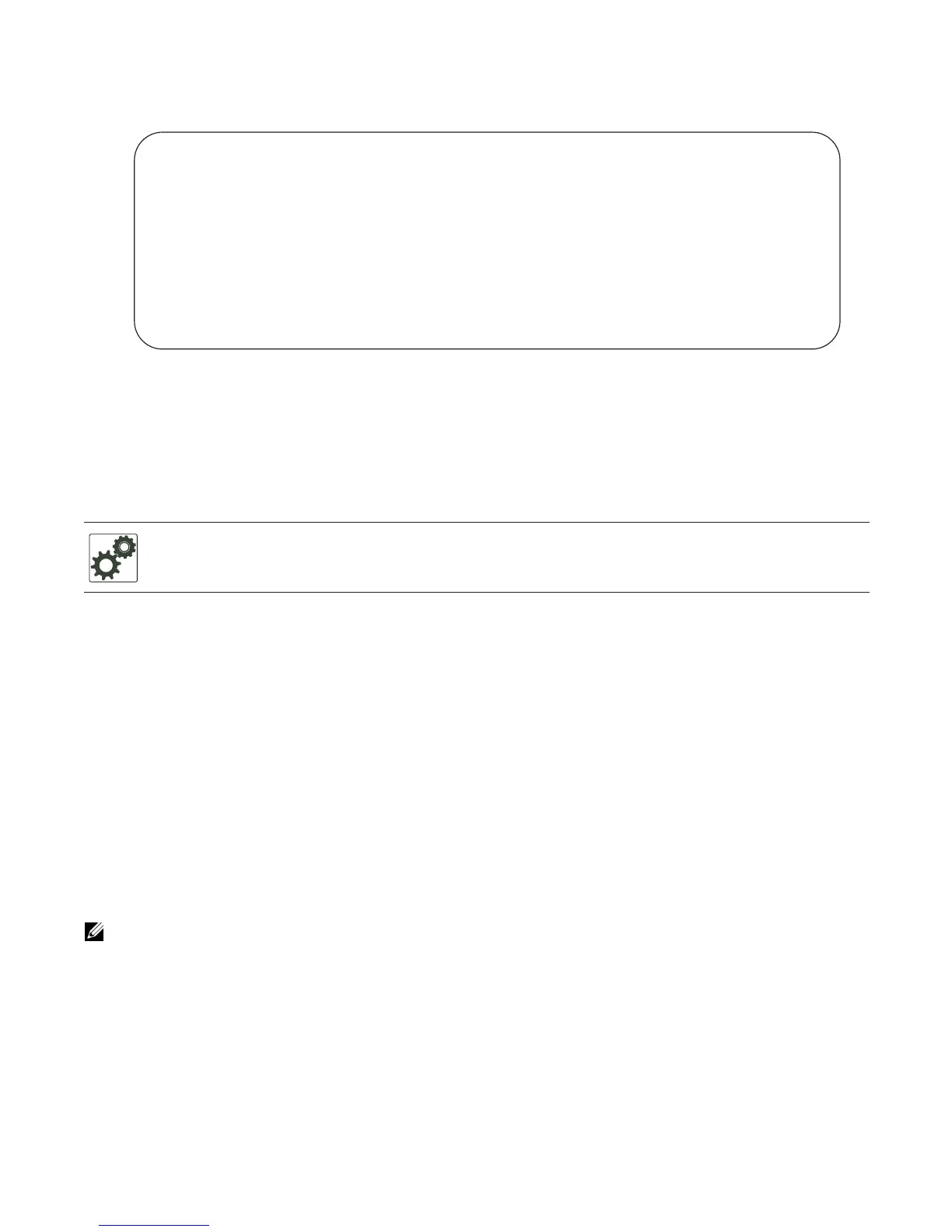Quality of Service (QoS) | 423
Figure 24-8. Marking Flows in the Same Queue with Different DSCP Values
Display Configured Class Maps and Match Criteria
To display all class-maps or a specific class map, use the show qos class-map command from EXEC
Privilege mode.
Create a QoS Policy
There are two types of QoS policies: input and output.
Input QoS policies regulate Layer 3 and Layer 2 ingress traffic. The regulation mechanisms for input QoS
policies are rate policing and setting priority values. There are two types of input QoS policies: Layer 3 and
Layer 2.
• Layer 3 QoS input policies allow you to rate police and set a DSCP.
• Layer 2 QoS input policies allow you to rate police and set a dot1p value.
Output QoS policies regulate Layer 3 egress traffic. The regulation mechanisms for output QoS policies
are rate shaping and weighted random early detection (WRED).
Create an Input QoS Policy
To create an input QoS policy, follow these steps:
FTOS Behavior: An explicit deny any rule in a Layer 3 ACL used in a (match any or match all)
class-map creates a default to Queue 0 entry in the CAM, which causes unintended traffic
classification.
Note: When changing a service-queue configuration in a QoS policy map, all QoS rules are deleted and
re-added automatically to ensure that the order of the rules is maintained. As a result, the Matched
Packets value shown in the show qos statistics command is reset.
FTOS#show run class-map
!
class-map match-any example-flowbased-dscp
match ip access-group test set-ip-dscp 2
match ip access-group test1 set-ip-dscp 4
match ip precedence 7 set-ip-dscp 1
FTOS#show run qos-policy-input
!
qos-policy-input flowbased
set ip-dscp 3

